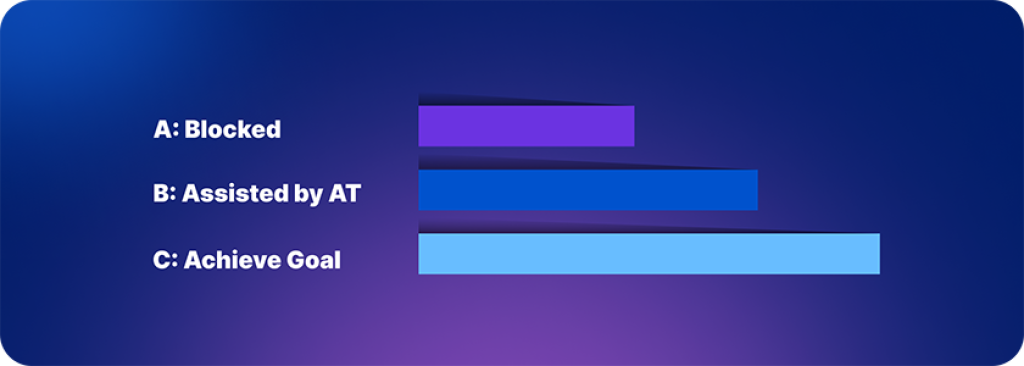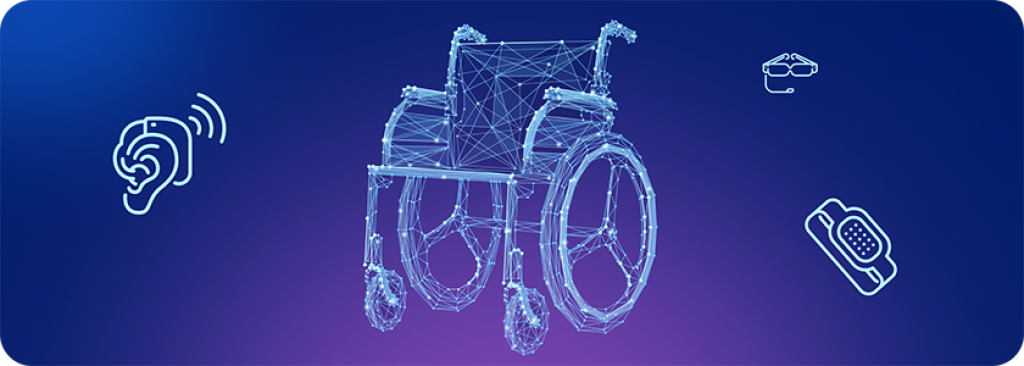Mid Tech Assistive Technology: Accessibility Now
Everything You Need to Know About Mid Tech Assistive Technology
Mid tech assistive technology (AT) is a term that describes a category of assistive technology devices that fall right in the middle of the technology spectrum. Mid tech AT devices are typically more complex than low tech devices, but they are not as complex as high tech devices. These tools offer practical solutions for those with disabilities. Mid tech AT devices can be used to help people with a variety of disabilities. From students with learning difficulties to adults with mobility issues, many find these technologies to be life-changing.

Choosing Your Best Devices: Five Things to Remember
Before getting into mid tech assistive technology examples, here are some things to keep in mind:
User Needs ➜ What challenges does the user face? Choose a device that addresses those. User Abilities ➜ Understand the strengths of the user and pick a device that complements them. Environments ➜ Where will the device be used most? At home, school, work, or outdoors? Maintenance ➜ Opt for devices that are durable and don’t require frequent maintenance. Budget ➜ Find AT that aligns with your budget without compromising on essential features.
The Range of Assistive Technology
Assistive technology tools are any device or equipment that can help people with disabilities perform tasks that they would otherwise be unable to do. AT can range from simple low-tech or no-tech devices, such as sign-language interpreters, canes, walkers, and tricycles, to complex, high-tech devices, such as robotic arms and voice-activated computers. AT can be broadly categorized into four sections: no tech, low tech, high tech, and medium assistive technology.
No Tech AT Low Tech AT Mid Tech AT High Tech AT No tech solutions are low resource solutions that rely on human ingenuity and creativity. They utilize procedures, services, and natural resources that are already present in the environment. They do not require specialized devices or equipment. Low tech assistive technology items are simple, non-electronic tools. They are an inexpensive type of AT. Low tech AT devices are often easy to use and do not require any special training. However, they can make a big difference. Medium tech assistive technology is what we'll discuss most here.These tools might need batteries or simple electronics. Mid tech AT is more complex than low tech AT, but less expensive than high tech AT. Some training may be required. The most complex and expensive type of AT, these advanced tools often require sophisticated electronics and software, as well as specialized training. They can provide many benefits for people with disabilities. ★ Extra time ★ Canes and walkers ★ Electronic magnifiers ★ Speech to text ★ Interpreters ★ Magnifiers, glasses ★ Portable note takers ★ Text to speech ★ Large print ★ Braille ★ Voice amplifiers ★ Computers, tablets ★ Pencil grips ★ Velcro fastening ★ Wheel chairs ★ Electric wheelchairs ★ Colored paper ★ Adaptive seating ★ Audio books ★ Cochlear implants ★ Service animals ★ Reachers, grabbers ★ Spellcheckers ★ Brain-tech interfaces
Of course, aside from the lists of tools above, there are many other solutions, running the gamut of high to low tech. While certain high tech AT items may be among some of the most expensive and difficult to come by, there are also many aid programs, as well as government or local grants, and even technology lending libraries. These improve access to accessibility tools. And, there are some organizations who even offer demonstrations for people who wish to see how the technology works.
Which AT Is Right For You?
The decision of whether to use mid tech AT or high tech AT depends on the individual's needs and preferences. Some people may prefer the simplicity and affordability of low tech AT, while others may find that mid tech AT or high tech AT provides them with the most benefits.
It is best to consult with an assistive technology professional to determine the best type of AT for an individual's needs. An assistive technology professional can assess the individual's needs and recommend the most appropriate AT devices and services.
Alternatively, instead of scheduling and waiting for someone to recommend a tool, people with disabilities who want to independently acquire the appropriate AT for themselves can simply read up on it. Even a search of accessibility blogs and ordinary shopping sites can lead to useful devices, like this mid tech simple communication aid. Simple communication aids can include picture boards, speech-generating devices, and augmentative and alternative communication (AAC) software. Other AT that’s considered medium assistive technology: Battery operated door openers, assisting with mobility issues, and adaptive alarm clocks, for individuals with hearing impairments. These clocks use lights or vibrations to wake someone up without sound.
When we talk about digital accessibility, certain accessibility tools such as overlays, browser extensions, plug ins, and others also come into play. These are solutions that help make websites accessible, and they are often free, freemium, or low-cost. Digital accessibility tools are classified as high tech solutions in the assistive technology categories. They are actually fairly uncomplicated to use, for the most part.
The Role of Training and Support
Assistive devices are only as good as the user's ability to operate them. Proper training is vital. By investing time in learning how to effectively maneuver these devices, users can extract maximum value. Support from manufacturers or service providers can also smooth the journey. This also applies to low tech, but it is certainly a priority to learn how to take the best advantage of mid tech and high tech AT.
Mid Tech Assistive Technology: A Transformative Tool
Simple as they may sometimes be, using low or mid tech solutions can reframe reality for people with disabilities. Using mid-tech assistive technology can lead to:
Increased Independence
Mid tech AT can help people with disabilities be more independent in their daily activities. For example, electronic magnifiers can help people with visual impairments read books and newspapers, and adaptive keyboards make it easier to type for people who have motor disabilities.
Improved Communication
Mid-tech AT can help people communicate their needs and wants more effectively. For example, simple communication aids can help people with speech disorders communicate with others, and speech-to-text software can help people who have difficulty typing or writing.
Maximized Participation
Mid tech AT can help people with disabilities participate more fully in society. For example, overlays for websites and apps can make it easier for people with disabilities to use the internet, and portable note takers can help people with disabilities record lectures, create presentations, and stay organized.
Reduced Isolation
Mid tech AT can help people with disabilities to connect with others and stay engaged in their communities. For example, video conferencing software can help people with disabilities to attend meetings and events virtually, and social media platforms can help people with disabilities to connect with others who share their interests.
Better Quality of Life
Mid tech AT can help people with disabilities to improve their physical and emotional wellbeing in many ways. For example, electronic magnifiers can help people with visual impairments to enjoy reading and other hobbies, and portable note takers can help people with disabilities to succeed in school and work.
Mid tech AT can be a valuable tool for people with disabilities. Do you think you or someone you know could benefit from mid tech AT? You might want to schedule a consult with an assistive technology professional to assess your needs and recommend the most appropriate AT devices and services.
Who Uses Mid Tech Assistive Technology?
Mid tech AT can be a great option for people of all ages with a variety of disabilities. Over their lifespans, a large percentage of the population will use some form of assistive technology, whether it’s to assist a child in school or an aging adult with changing needs.

Children with Learning Disabilities
Mid tech AT can help children with learning disabilities to stay organized, take notes, and complete assignments. And, with AT-assisted improved communication, their learning can progress more smoothly.
Adults with Disabilities
Mid tech AT can help adults with disabilities to be more independent, go to work, and participate in social activities. For example, instead of a traditional low-tech white cane, people who are blind or visually impaired may choose an UltraCane, which utilizes narrow beam technology to help users safely step around any obstacles ahead of them.
Seniors with Disabilities
Mid tech AT can help seniors with disabilities to stay active and connected with their community, especially if they choose to remain in their own homes. Medical or health mobile apps and wearable alert systems are some of the most popular ATs for older adults. And there are the ever-useful delivery apps.
Assistive Technology: Possibilities Ahead
The world of low, high, and mid tech assistive technology is always evolving. Touch-responsive devices, improved battery endurance, and devices that can sync with smartphones are just the beginning. The future is a moving target, but the goal is clear: Integrating accessibility seamlessly into our everyday.
Whatever lies ahead of us, it’s likely that our physical human needs and abilities will remain more or less constant. By using our environments to sync with our needs and talents, and by leveraging the power of assistive technology, we can go farther than we ever imagined.

With so many people using assistive technology, and even more in need of it, we must realize that AT is a human right. Everyone deserves the opportunity to live a full and independent life, regardless of their disability. AT is not a magic bullet, but the right AT can make a real difference to people. It is important to make sure that everyone has access to the AT they need.
Working together, we can use our ideas and build on the technology that already exists to make wider and more profound changes in the way people with disabilities interact with their surroundings. We can create a more inclusive and accessible world for everyone, a world where all of us have the opportunity to realize their dreams and reach their full potential, regardless of their disability. That's a future worth striving for. Let’s go.









